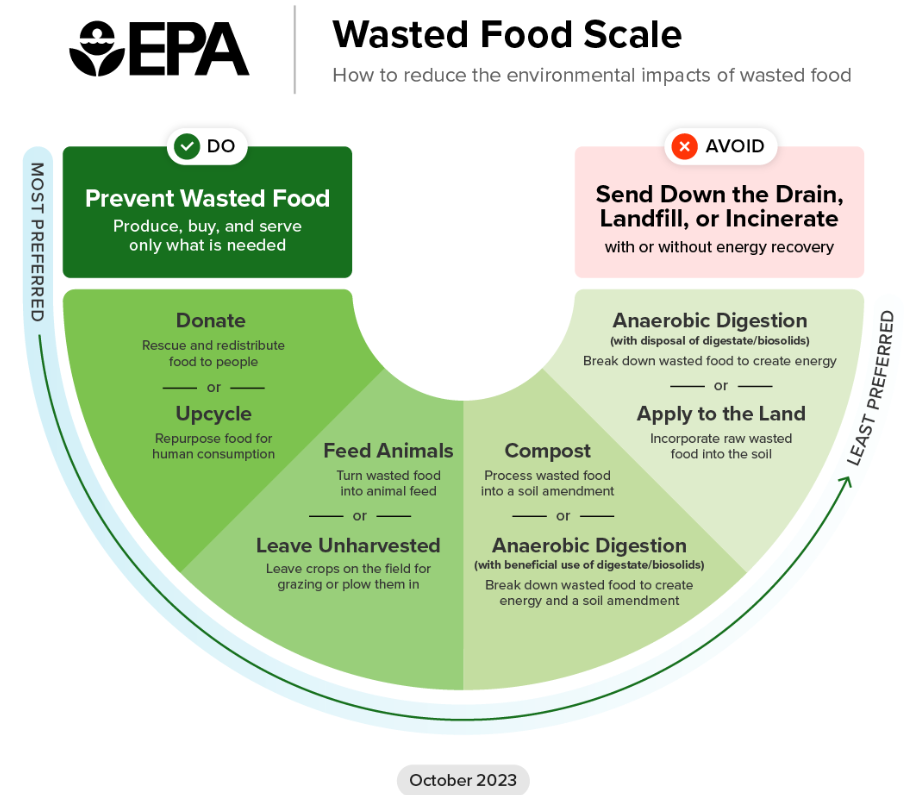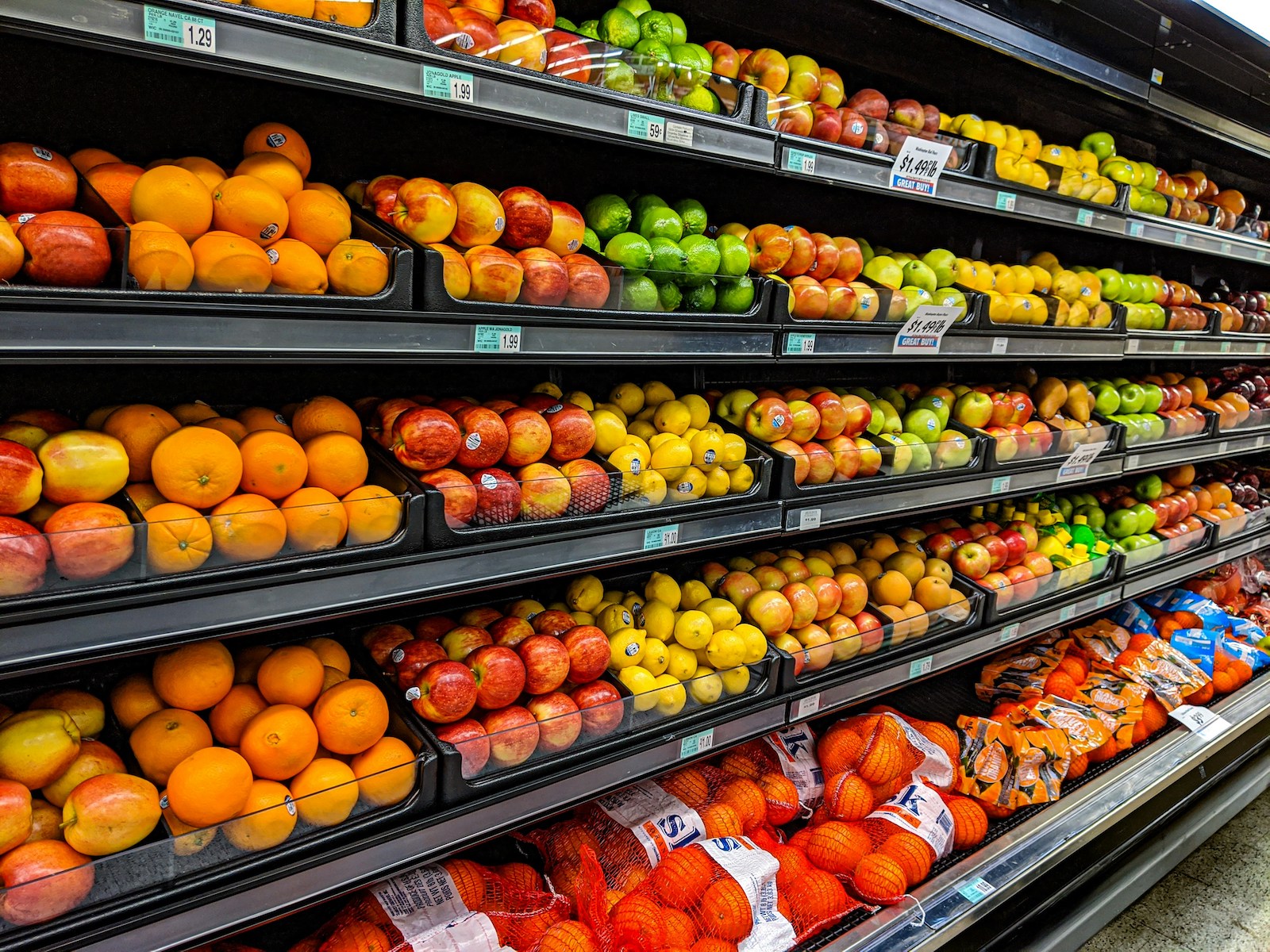A colorful mix of ripe and overripe apples in a pile.Photo by Marek Studzinski
In honor of Food Waste Prevention Week, we're taking a closer look at the Environmental Protection Agency's (EPA) recently updated Wasted Food Scale. This new tool, released in October 2023, replaces their Food Recovery Pathway from 1990 and offers new insights into the environmental impacts of food waste and the most effective ways to reduce it.

Image by the U.S. Environmental Protection Agency
EPA CHAMPIONS THE CIRCULAR ECONOMY
The EPA examined how managing food waste can fit into a circular economic model. This approach aims to minimize using resources by keeping materials in circulation for as long as possible. Unlike the traditional throw-away economy, a circular system prioritizes preventing waste, reusing materials, and minimizing contamination. The EPA's assessment considered both the environmental impact (using lifecycle assessments) and how well each waste pathway aligns with circularity principles. This included factors like the potential for reuse, soil health, and overall resource conservation.
In addition to their ranking, the report provides these key takeaways:
- Preventing food waste, donating, and upcycling are the three most impactful measures to take, but prevention is the most environmentally beneficial.
- Sending food “down the drain” to later be treated as wastewater, throwing it in landfills, or incinerating it should be avoided because it produces significant methane emissions.
- Composting and anaerobic digestion (i.e. breaking down waste with microbes) are more environmentally valuable if they are repurposed instead of disposed of. For instance, recycling wasted food into soil amendments, through composting, anaerobic digestion, and wastewater treatment, can offer long-term improvements to soil structure and health by reintroducing nitrogen and carbon back into the soil.
- While methods like anaerobic digestion can also turn food waste into energy, the environmental gains are minor compared to the impact of producing the food in the first place. These methods recover only a fraction of the energy used to grow the food, and some even create air pollution.
- As the U.S. moves away from fossil fuels, energy from wasted food will become less valuable over time, making prevention even more important over time.
- EPA Administrator Michael S. Regan
EVALUATING CURRENT AND FUTURE FOOD WASTE POLICIES
Current food waste policies don't go far enough. This is where this new scale comes in. It goes beyond the EPA's 1990 Food Recovery Pathway by providing a more detailed analysis of how food is disposed of, including repurposing opportunities. The tool also incorporates the latest science on composting and landfill methane emissions for a more comprehensive picture.
This new Wasted Food Scale is especially valuable for policymakers, emphasizing the critical role of prioritizing waste reduction at the source—a strategy that’s been overshadowed by waste diversion instead. Weslynne Ashton, a professor of environmental management and sustainability at the Illinois Institute of Technology shared in the AP, “I think it is possible to get zero organic waste into landfills … But it means that we need an infrastructure to enable that in different locations within cities and more rural regions. It means we need incentives both for households as well as for commercial institutions.”
The good news is, change is on the horizon. The EPA's research played a key role in the Biden-Harris Administration's draft strategy, which aims to cut food loss and waste in half by 2030. This strategy prioritizes preventing and recycling food waste through various incentives.

Photo by gemma
TAKING ACTION DURING FOOD WASTE PREVENTION WEEK
By adopting the principles of the circular economy and prioritizing prevention, we can significantly reduce food waste and its environmental impact. The EPA's Wasted Food Scale is a powerful tool that empowers individuals, businesses, and policymakers to make informed decisions that benefit our planet.
Let's all take action this Food Waste Prevention Week. Take our quiz to see how much food you really waste, learn how to reduce waste and save money by committing to a month-long Food Waste Challenge, and see where you can donate food before it goes bad with our Food Rescue Locator.
